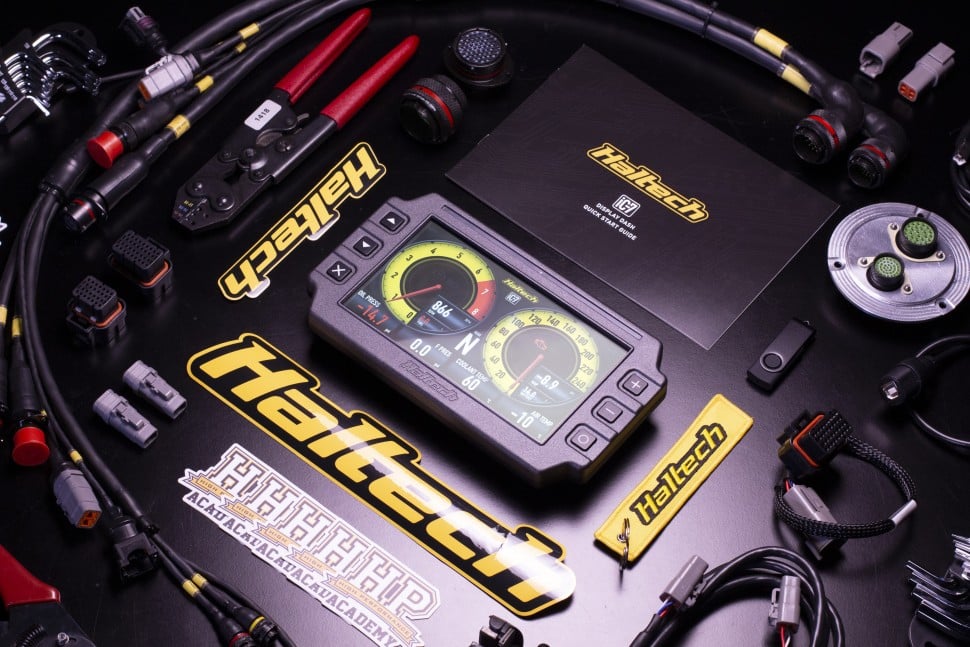| 00:00 |
An important question that often comes up in the aero game is what order should someone develop their car in, and how should they go about it? Let's explore the concept of starting from a base car with no aero, then developing from there.
|
| 00:12 |
From a performance perspective, once we've learned the rules well, typically the first things we need to start with are getting a front splitter and rear wing on.
|
| 00:21 |
These are the items that will by far yield the highest performance advantage over the stock aerodynamics.
|
| 00:26 |
The front splitter provides a large amount of front downforce, and the rear wing balances it out on the back.
|
| 00:32 |
Front splitters are typically extremely drag efficient, however adding a rear wing will add a reasonable amount of drag, so when we take this first development step, it's likely that our top speeds will decrease.
|
| 00:45 |
Although we should see a drop in lap time from improved cornering speeds.
|
| 00:49 |
Even at this first step of development, adjustability of the aero balance should be kept in mind.
|
| 00:54 |
This normally means having a rear wing with a decent range of adjustments.
|
| 00:57 |
While this first step is happening, we should also be considering how to manage our cooling.
|
| 01:03 |
Without good cooling flows, a car can't run well, and this should be pretty high on our priorities from both a reliability and performance standpoint.
|
| 01:12 |
This includes engine, driveline and brake cooling, and don't worry, we'll be covering this topic in detail soon.
|
| 01:18 |
With the front splitter, rear wing and cooling on, we can begin thinking about other upgrades.
|
| 01:23 |
The next biggest gain from upgrades, while still remaining low, is the performance.
|
| 01:26 |
The main reason for this is to add a decent set of front kennards, with the rear wing adjusted to match balance.
|
| 01:32 |
Once this is sorted, we should start looking at the higher effort upgrades, a smooth flat floor and a diffuser.
|
| 01:39 |
At this level, we shouldn't be messing around with floors that have sculpting through the entire underside, known as tunnelled floors.
|
| 01:46 |
It's best just to keep it simple with a flat floor over the majority of the underside of the car.
|
| 01:51 |
When adding a flat floor to the car, it's critical that we monitor the cooling closely, because they can significantly reduce the amount of airflow flowing through the radiator and the engine bay, and can also cause a lot of heat to build up from the exhaust.
|
| 02:05 |
A factory car will usually be designed to vent all its engine bay air and cooling air through the rear of the engine bay and the wheel arches, down to the area underneath the car.
|
| 02:15 |
When we close this up, we've removed the air path that the car was originally designed to use, so additional modifications and a bit of diligence are required.
|
| 02:24 |
If we have to pick between a flat floor and a diffuser, we'll have to go with the flat floor and a diffuser for resource reasons.
|
| 02:28 |
I would say that if we're drag limited or front downforce limited, we should go with the flat floor first.
|
| 02:33 |
If we're rear downforce limited, go with the diffuser first.
|
| 02:37 |
With the flat floor sorted, we can now move up to sealing up the engine bay.
|
| 02:42 |
Making sure that all the air is coming in through the radiators and such go out through the hood instead of into the underfloor can be very useful for improving both splitter and floor performance.
|
| 02:53 |
Again, we need to monitor temperatures here.
|
| 02:56 |
And make sure that everything is still happy as we start to close it up.
|
| 03:00 |
That covers the basics, so let's summarise.
|
| 03:02 |
To develop a race car's aerodynamics, the first step is adding a front splitter for front downforce and a rear wing to balance it out, which offers significant performance gains despite adding a bit of drag.
|
| 03:14 |
After ensuring proper cooling, the next step involves adding front canards, followed by more complex upgrades like flat floor and diffuser, depending on whether the car is front or rear downforce limited.
|
| 03:26 |
Cooling must be closely monitored, especially with a flat floor, as it can impact airflow and heat management.
|
| 03:33 |
Finally, sealing the engine bay and redirecting airflow completely through the hood can further improve aero performance.
|





